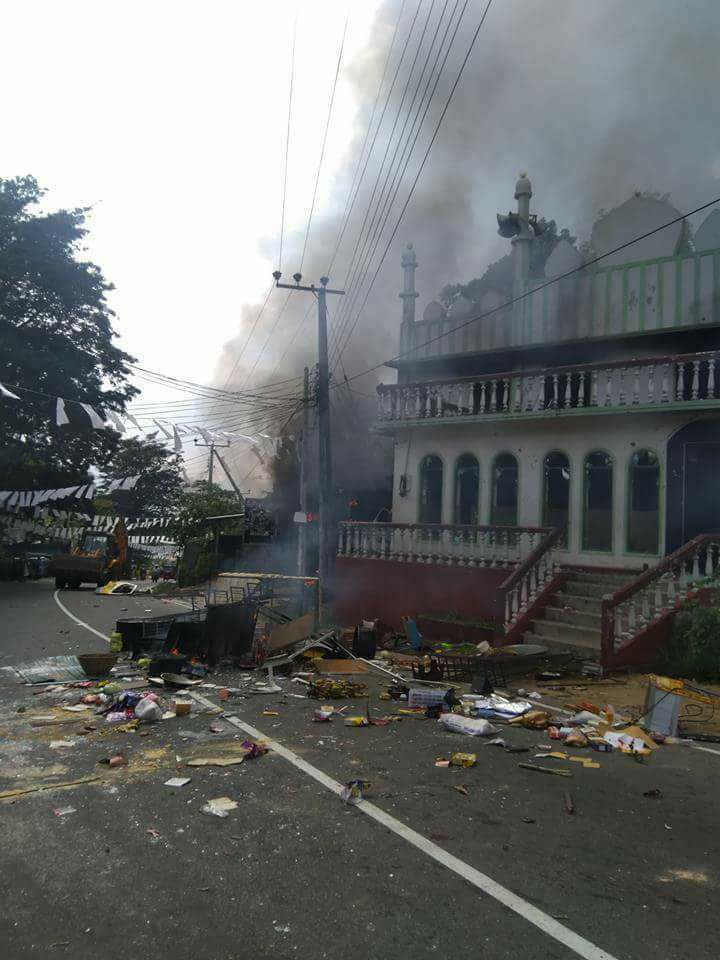Communal Violence In Sri Lanka

The aim of this article is to explore the communal violence in Sri Lanka and find out the root causes and mechanisms to solve such conflicts in the future. Communal violence is not a new phenomenon in the country. Throughout history there have been many incidents of communal violence among the Sinhala, Tamil and Muslim ethnic groups.
However in the post conflict era, religious violence has become very common between the Sinhala and Muslim ethnic groups. It is reported that in the past 6 years over 300 religious related incidents of violence took place elsewhere in the country such as Dambulla, Anuradhapura, Maligawatta, Aluthgama, Kooragala, Gintota, Ampara, Digana, Kandy, Puttalam etc. The above events have killed a number of people and have caused massive losses to the Sri Lankan economy. The Sri Lankan government which is responsible to protect the people regardless of ethnicity, religion, and race seems to not respond in a proper manner to curtail such violence and not implement any measures to prevent such violence. It is noted that most of the communal violence took place at the presence of Sri Lankan police and forces. It has brought some suspense to the Muslims about the law and order and has reduced their esteem in the present government. If such situations continue, the country may easily relapse into a conflict very soon.
Sri Lanka is a multi-religious country where Buddhists (71%), Hindus (13%), Muslims (9%) and Christians (7%) have lived in peace and harmony for over thousand years. However, in the post conflict era (after 2009) religious related violence between Sinhalese and Muslims has become very common. There have been a number of incidents reported in the past. The violence that took place in Kandy (Digana) is one of the recent communal clashes between the Sinhala and Muslim ethnic groups. Rioting in Kandy began in Udispattuwa and Teldeniya, later spreading
to Digana, Tennekumbura and other areas. The flames of this violence was ignited when a middle-aged truck driver of Sinhala ethnicity was assaulted by four Muslim youths following a traffic accident. The truck driver died of his injuries four days later. On the 5th of March Sinhalese mobs began attacking Muslim properties in the region, resulting in widespread damage to property. The riots, the first large scale Buddhist-Muslim sectarian violence since similar riots in 2014, prompted the Government of Sri Lanka to declare a State of Emergency for a period of ten days, in addition to the police curfew already imposed on the district. Social media networks including WhatsApp, Facebook, Twitter, Telegram and Instagram were blocked in the country in an effort to prevent mobs from organizing their attacks and spreading propaganda. Currently, the communal violence in Kandy is fully under control, however there are some minor incidents that have been reported in Puttalam and Aluthgama. It is reported that 25 mosques, 65 shops and over 100 houses were looted and burnt down (partly/fully) by some Sinhala radical youths.
There are many root causes for this communal violence in Sri Lanka: Political, economic, social, cultural and religious issues. Regarding the political issue, the cabinet Spokes-person Hon. Minister Rajitha Senarathna says that there are two Parliamentarians directly involved in this communal violence, however he did not disclose their names. Some critiques say that due to the continuous communal violence in Sri Lanka many Muslims have lost their trust and hope both on SLFP and UNP and remain in a big dilemma about their political stance in the future. Regarding the economic aspects, the violence in Kandy has cost over a billion rupees to the economy. Further, travel & tourism, stock exchange market and import & export also has been badly affected in the past two weeks. Regarding the religious issues, there is a lack of understanding among the Sinhalese about Islam, such as the Halal issue, number of mosques, dress code, etc. Although some information has been provided in the past that has not reached the Sinhala community yet. There is a fear among the Sinhalese about Islam and some extremist groups, similar to how Muslims also fear the Sinhala extreme groups now a days. Such misunderstandings and mistrust should be eliminated in both communities, otherwise it may lead to further communal violence in the future.


